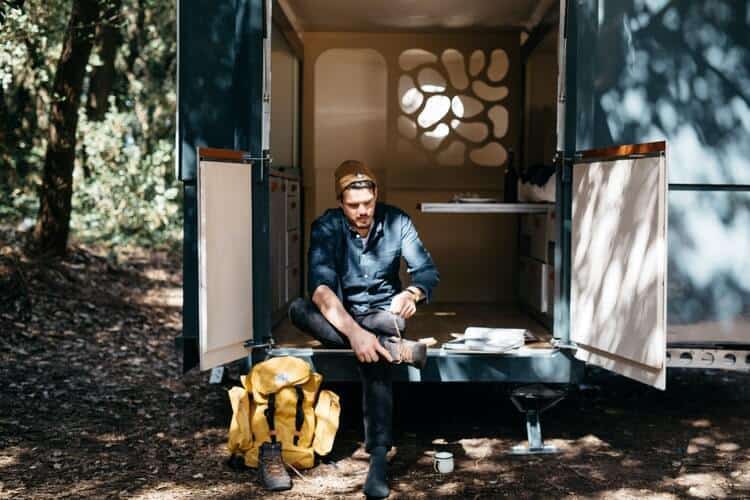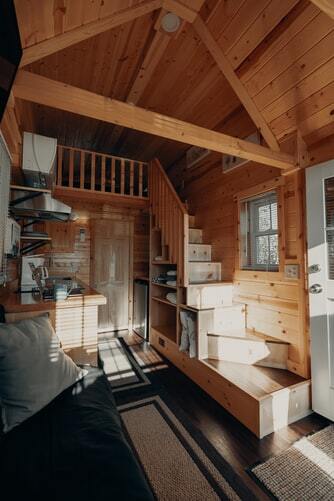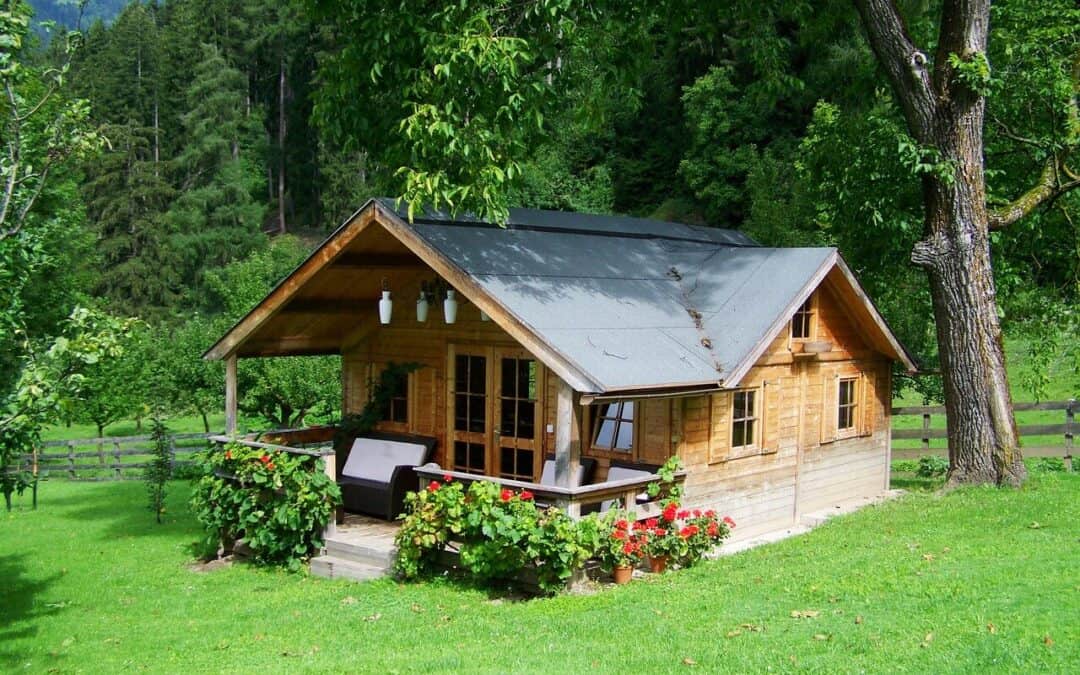Millennials are entering their prime home-buying years. They are also trailing other generations in wealth accumulation. Should it be a surprise that The Tiny House Movement is growing in popularity? While an average American house is 2,600 square feet, tiny homes are much smaller than that, covering only 100 to 400 square feet. Such extreme measurements lead to prominent benefits and drawbacks. If you’re interested in tiny houses, then keep on reading – we’ll explore both sides of the coin, so you can weigh out the pros and cons of tiny homes and decide whether living small is the right fit for you. And, if you’re a realtor, this list may also help you learn what to focus on when selling the idea of living small.
Cons of owning a tiny home
Securing a loan is very unlikely
There are two major problems you are to face when looking for a mortgage for a tiny home. First, a lot of these houses are movable. Properties without a permanent attachment to the ground aren’t considered real estate. Second, it’s almost impossible to secure a mortgage for houses priced under $100,000. If you need to secure a loan, you’ll have to look for alternative options, like RV or trailer loan, personal loan, or even through credit card.
Zoning regulations may be strict
If you’re building a permanent tiny home, you must comply with laws just like any other kind of property. Zoning regulations often have a clause restricting a minimum size of a house. These make building your tiny home a challenge, though some states make tiny homes outright illegal. If you’re opting for an RV-styled tiny home, you’ll experience the same difficulties as regular trailer owners.

Less space for your belongings
Living in such a small place entails a seriously minimalist lifestyle. And no, it doesn’t just mean having less space to leave junk lying around. Instead, you’re going to have fewer clothes and shoes, too. A limited selection of equipment for your hobby or exercise regimen. Only a few selected toys if you have kids. And, likely, only one pet, since more can turn your tiny home into a (not so) tiny circus.
Very limited living space
This is the most obvious con of owning a small house – your space will be limited. Expect to have a combined toilet/shower bathroom (without a bathtub). You will likely have a small, fitted kitchen, so don’t expect to cook complex dishes with a small stove. And since your slim fridge can’t store a lot of food, prepare to cook, buy groceries, and simply eat out often. It’s almost impossible to host a social gathering in a truly tiny home. One particularly challenging thing is that these houses do not provide personal space. If you’ve just had a nasty fight with your SO, going to another room to cool-off isn’t an option.
Despite these obvious shortcomings, tiny homes have several obvious benefits that make them a lucrative choice for some people. Let’s take a closer look.
Pros of owning a tiny home
Tiny homes are affordable even with a shoestring budget
The median home price in the US these days is around $340,000. With the interest rate from the mortgage and additional payments, fees, and commissions, this number will go north of $500,000. That’s half a million dollars. Not a very comfortable sum for a lot of Americans, even if split over 30 years. On the other side of the spectrum, we have tiny homes, which cost $23,000 on average to build, if you do all the work. And even if you buy a finished one, or hire someone to build, you’re likely to stay within $50,000. That’s 1/10th of what others will pay for their house!
These homes are also a good investment opportunity. Smart investors have a number of options, like traditional monthly rents, renting out as a vacation rental, or even straightforward flipping. Given their price, a savvy investor can purchase several tiny homes to quickly grow their portfolio.

The maintenance is cheap
Your new cute tiny home will not only save you money during the initial purchase, but will also slash your monthly expenses, as well. The nightmares of air conditioning a 3-bedroom house in summer or heating it in winter will be unknown to you. Your bills for water, electricity, fuel, and waste disposal will be much lower. There are way fewer things that can break down, meaning you will save on repairs and maintenance. Not to mention you won’t spend the entire afternoon cleaning your house.
It promotes minimalism
For many people, this may be viewed as a downside. But if you’re a fan of Marie Kondo and the whole minimalism movement, a tiny home can be a great driver to get rid of all the unnecessary stuff you own. Minimalism will not only let you lead an eco-friendly lifestyle, but it will also help you save money and even improve your mental health!
It’s an environmentally conscious choice
If you’re concerned about climate change and would like to take action, buying a tiny house is a great first step. These take much fewer materials and energy to build. As we already mentioned, you’ll spend substantially fewer resources and your carbon footprint will be lower, and it’s easy to use renewable energy sources, like solar panels. The minimalist lifestyle helps to curb unnecessary consumption, and your household will produce far less waste.
The economic situation, overpopulation, and global warming are becoming more and more serious challenges to us. We can only expect that tiny homes will only grow in popularity. What’s your opinion on tiny homes, would you consider living in such a house yourself? Share your answer with us in the comments below!


Recent Comments